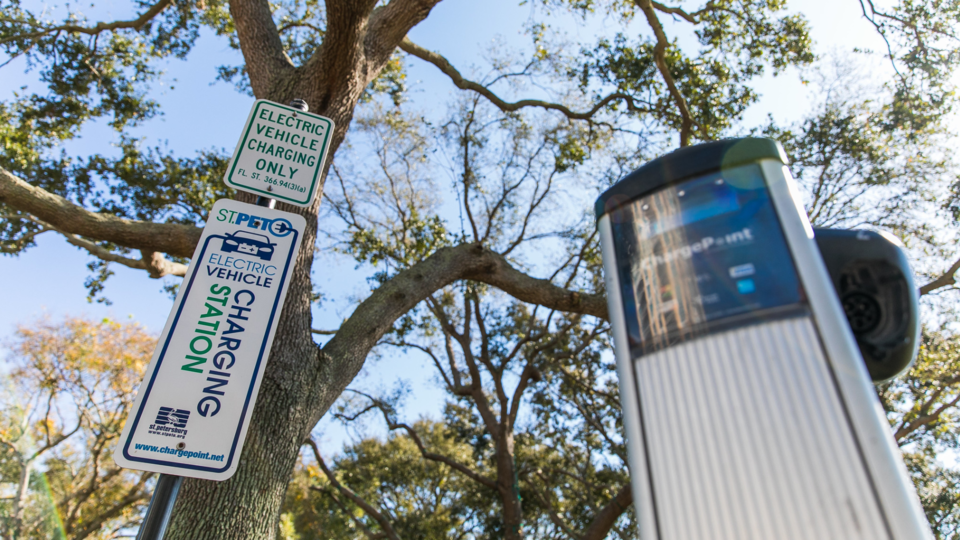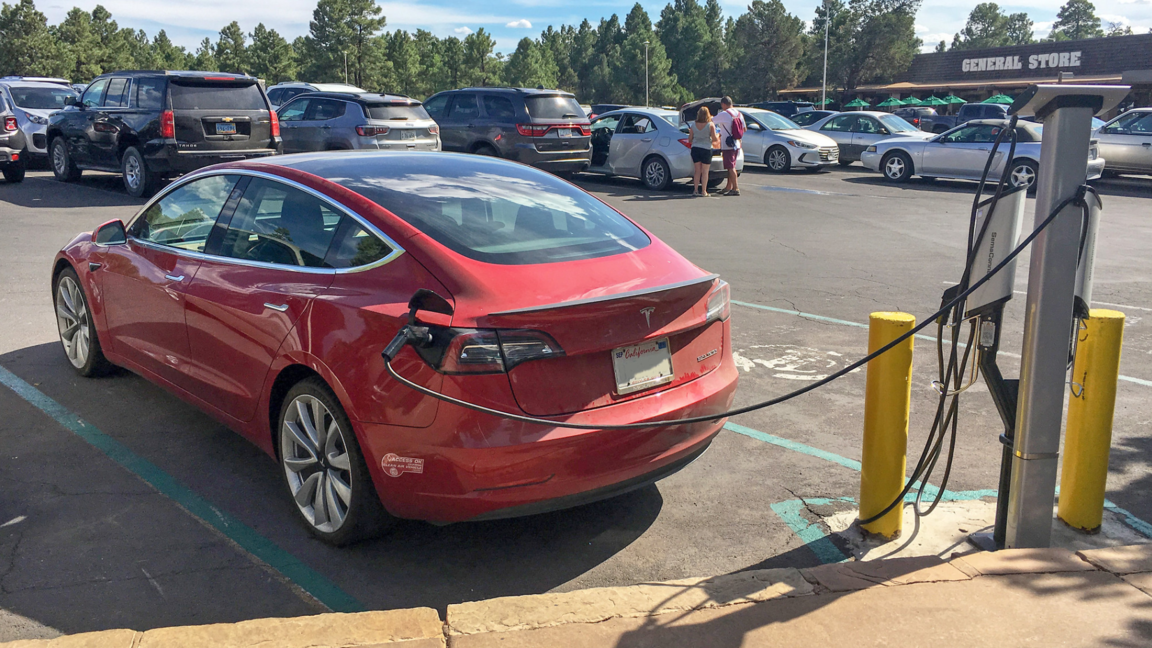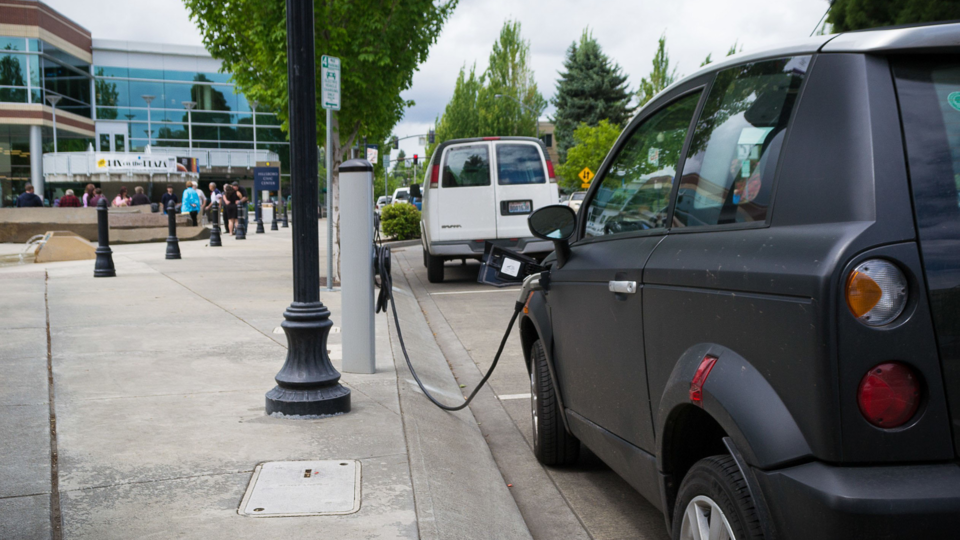February 27, 2023
Think about a road trip in a gas-powered vehicle. The gas warning light flashes on, so you exit the freeway to a nearby gas station and set up your car to begin refueling. You might pop into the convenience store on site to use the restroom or grab a snack, but most likely you’ll stay by the vehicle, wait a few minutes for the tank to fill up, and be on your way.
Now picture the same experience, but in a fully electric vehicle (EV). The range on the display is dropping too low for comfort, so you track down a public charging port and plug in your car. However, despite this being a fast-charging station, you’ve still got 20-30 minutes to wait, and there’s nothing within walking distance that feels like a productive or enjoyable use of your time.
In a nationally representative survey conducted by Consumer Reports in early 2022, more than one-third of 8,000 respondents answered that if they were to buy or lease a car today, they would seriously consider or definitely choose an EV. However, among the survey respondents who did not indicate readiness to go electric, the top concern was charging logistics: where, when, and how long it would take to charge the vehicle. This concern ranked above range anxiety (the general fear of being stranded due to the battery running out) and price, both of which are widely recognized as barriers to even faster adoption of EVs.
With significant funding available through the Infrastructure Investment and Jobs Act (IIJA) and state-level funding sources, we face a unique and powerful opportunity now not to just increase the availability of EV charging options, but to merge the implementation of charging infrastructure with land-use planning to make EV use more practical, plausible, and equitable. This article unpacks the concept of electric vehicle-oriented development and where agencies are putting these principles into practice.
We face a unique and powerful opportunity not to just increase EV charging availability, but to merge the implementation of charging infrastructure with land use planning to make electric vehicle usage more practical, plausible, and equitable.
EVs are on the Rise, but Charging Questions Remain
In early 2022, we talked about factors ushering in the “EV boom.” Funding from the National Electric Vehicle Infrastructure (NEVI) Formula Program, an increasing number of EV product offerings, a growing EV used car market, fluctuation of gas prices, tax credits, and individual states’ substantive goals to rapidly increase sales of zero-emission vehicles over the next decade are all contributing to EVs taking up a rapidly growing share of cars on the market.
Have we reached the EV boom? While tipping points are generally easier to identify with hindsight, we’re clearly seeing adoption of EVs increase in a manner that’s outpacing other transportation technologies that have been predicted to transform our communities.
At the same time, there are still barriers to more widespread adoption of EVs, and high on the list is the logistics of where and when to charge.

We're clearly seeing adoption of EVs increase in a manner that's outpacing other transportation technologies that have been predicted to transform our communities. At the same time, there are still barriers to more widespread adoption of EVs, and high on the list is the logistics of where and when to charge. Image: City of St. Pete on Flickr.
Kittelson has been working with the Oregon Department of Transportation (ODOT) on the Transportation Electrification Infrastructure Needs Assessment (TEINA), a comprehensive study that included analyzing EV charging needs across the state with a special focus on rural and underserved communities, resulting in a statewide EV plan that got Oregon approval on $65 million in EV infrastructure funds. Through TEINA as well as our work with local agencies to estimate charging needs, we’ve gotten an up-close view of the various use cases for EV charging-personal vehicles, transit, heavy vehicles, micromobility, and transportation network companies (TNC) among others -and the reality that many of them cannot be solved by home charging. For example, home charging is not a plausible option for:
- people who don’t have a private parking space at home;
- people who live somewhere that doesn’t have high capacity electricity service available;
- people who can’t afford to install a charger at home; or
- people who rent a house or apartment.
The need for available, reliable charging options outside the home is evident, and it’s being addressed. Accelerated by the IIJA, states are assessing charging needs and making steady progress to implement more charging infrastructure, which will chip away at range anxiety. However, if these activities are conducted in a silo-with the implementation of charging infrastructure disconnected from land use planning-we’ll simply have a mismatch between the number of charging ports and locations where they are needed the most, maintaining charging logistics and inefficiencies as a barrier. We’ll be missing a big opportunity to build more cohesive, connected communities.
Through conversations with clients, we at Kittelson have seen a widespread interest in not only building more charging infrastructure, but holistically improving mobility through connecting EVs and land use.
How Can Electric Vehicle Charging and Land Use Overlap?
Connecting EV charging to retail and amenities is nothing new to the private sector. In a 2020 survey, public charging network Evgo found that, of their customers who shopped during their last charge, more than 80 percent said that the availability of charging stations influenced their decision to shop at a particular location, and that the shopping trips resulted in more than $1 spent per minute of charging. Aware of these trends, grocery stores and retailers are partnering with suppliers of EV charging networks to entice customers through convenient charging options. In early 2022, Starbucks and Volvo announced a public EV charging network, through which EV owners can enjoy a cup of coffee while their car charges at a fast-charging station outside.
However, it’s grants at the federal, state, and local levels that are funding widespread EV infrastructure, and that funding is allocated by public agencies. Thus, it’s imperative that agencies are also thinking about the connection between EV charging and land use. Because agencies look at their communities as a whole, rather than from the perspective of an individual business, they possess an opportunity to build connected and vibrant neighborhoods and community centers through leveraging funding from EV infrastructure grant programs. Are agencies facilitating the discussion so that we’re locating charging infrastructure in the places that are most beneficial for charging as well as supporting existing land uses?
We refer to this idea as electric vehicle-oriented development (EVOD): finding ways to connect EV charging with existing and planned amenities and resources. Just like we’ve seen with Transit Oriented Development (TOD), in which clustering a higher density of mixed-use spaces around transit stations benefits a community, when we think about land-use planning around EV charging infrastructure, it’s clear there’s a captive audience (people waiting for their vehicles to charge) and a big opportunity (connecting these people to resources and amenities). EVOD is a concept we’ve been ideating as part of the Innovation Kitchen, Kittelson’s in-house incubator that sponsors the development of new tools, processes, and ideas that our staff see value in exploring.

Electric vehicle-oriented development (EVOD) finds ways to connect EV charging with existing and planned amenities and resources. Image: Grand Canyon National Park on Flickr.

Electric vehicle charging stations in Hillsboro, Oregon. Image: Wikimedia Commons. https://commons.wikimedia.org/wiki/File:Electric_Vehicle_Charging_Station.jpg
Electrifying Mobility Hubs
What does EVOD look like, practically? While it is present in any scenario where land use is brought into the conversation about EV charging, one of the most practical applications of EVOD is the electrification of mobility hubs.
We use the term “mobility hubs” to refer to community-centered, multimodal facilities designed to foster seamless connections between modes, whether that’s parking your car to get on a subway, or dropping off bikeshare to catch a bus. When we electrify mobility hubs-in other words, implement charging infrastructure along with other multimodal connections-we make EV ownership a reality for those without charging options at home or work. At an electrified mobility hub, you can park your EV at a charging port and finish your trip via bus, or drop a shared e-bike at a solar-powered station and transfer to light rail.
Through reducing barriers to EV ownership, EV-centered mobility hubs have the potential to elevate the environmental benefits of EVs, which in turn bolsters the sustainability and health of communities. Though EVs offer clear environmental advantages over gas-fueled vehicles, they are not the silver bullet to solve climate change. EVs are still cars, and often utilized as single-occupancy vehicles. However, the sustainability opportunities of EVs are more promising when we integrate them into a transportation system built around multimodal connectivity and shared mobility.
The sustainability opportunities of EVs are more promising when we integrate them into a transportation system built around multimodal connectivity and shared mobility.
Where Agencies Are Advancing Electric Vehicle-Oriented Development
As we’ve further explored the opportunities of EVOD in the Innovation Kitchen, we’ve also been in discussion with agency partners and clients who are interested in applying it to meet community needs.
In November 2021, the San Diego Association of Governments (SANDAG) put out a call for innovative and immediately implementable concepts to advance mobility throughout the region. Kittelson was one of 18 firms that submitted a concept. Partnering with Beep and TESIAC, we pitched a network built around mobility hubs focused on investments in electric infrastructure. The pitch included a fleet of automated, electric shuttles to provide first- and last-mile connections to existing transit services and to strategically located EV charging infrastructure, as well as ideas for incentivizing mobility partners with fleet charging needs to use these hubs to equitably improve mobility across all corners of the community.
Seeing this idea as useful to their regional strategy, SANDAG selected the pitch as one of three concepts to move into round two, which involved presenting at SANDAG’s community fair, having conversations with individual jurisdictions, and sharpening our thoughts regarding costs and details. Kittelson and the TESIAC team will be working with SANDAG to advance this concept further in 2023.
We also are excited to be kicking off an EV plan with an emphasis on land use for the Hillsborough Transportation Planning Organization in Tampa, Florida. The TPO wants to know where to invest resources to install EV infrastructure. We’ll be working with them on a land use and demographics analysis to understand the most strategic areas for EV charging investment, to close equity gaps and promote economic vitality.
Make EVOD a Reality in Your Jurisdiction
If you’d like to hear more about what we’re learning with EVOD and how to leverage EV funding to build more cohesive communities, we’d be glad to continue the conversation. Reach out to us directly at ghadjchikh@kittelson.com and ainamdar@kittelson.com!
